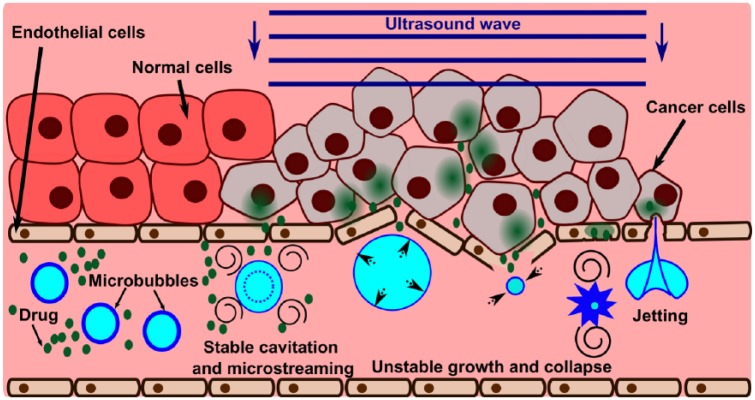Figure 1.
Illustration of the physical mechanisms of microbubble-enhanced ultrasound drug delivery. At lower ultrasound intensities (e.g. at the edge of the beam), bubbles may undergo slight (up to about two-fold) oscillations in size – stable cavitation. This process causes fluid flow around the bubble (microstreaming) which may provide means for active convection in the vessel and increase the extravasation of the drug. At higher ultrasound intensities, the bubble undergoes an unstable growth followed by a rapid collapse that causes the distension and invagination of the vessel wall, respectively. These deformations are associated with high mechanical stress and damage to the endothelial lining of the vessel, thus allowing the drug to penetrate beyond the vessel wall. The bubble collapse is also accompanied by enhanced microstreaming and formation of liquid jets that may impinge on the vessel wall and disrupt cell membranes.

